You must be logged in to post a review.
SAINT HELENA – 1817
€68.00
Figure to assemble and paint
Ref.: 05 – NAP
Weight: 250 grs.
Material: White Metal
Number of Pieces: 18
Historical Review:
Imagine Napoleon’s dismay when he realised he was not being banished to America as he anticipated, but to the remote island of St Helena in the mid-Atlantic instead. Located 1,200 miles from the nearest landmass off the west coast of Africa, St Helena was the ideal choice for Napeoleon’s exile… after all, the last thing the British wanted was a repeat of Elba!
Napoleon arrived in St Helena on 15th October 1815, after ten weeks at sea on board the HMS Northumberland.
William Balcombe, employee of the East India Company and one-time family friend of the French emperor, put Napoleon up at Briars Pavilion when he first arrived on the island. However a few months later in December 1815, the emperor was moved to nearby Longwood House, a property said to have been particularly cold, uninviting and infested with rats.
He carried with him an important entourage. In total there were almost thirty people, among whom were not some who would have wanted to join Napoleon in his exile, such as his unruly sister Paulina, which would undoubtedly have made the stay more fun. The main characters who left with the Corsican were Generals Bertrand, Montholon (both with their wives and children) and Gourgaud, a hero in the Bérézina and who had saved Napoleon by shooting a Cossack who was threatening the emperor with his spear; the count of Las Cases, as secretary and future author of the emperor’s memoirs, with his son; and ten servants, among them the valet de chambre Marchand, devoted, loyal and indispensable; the chef Lepage, the Archambault brothers, groom and coachman, the barber Santini, the pastry chef Piéron, and of course Louis-Etienne Saint Denis, a Mamluk of the guard and nicknamed Ali, who had already accompanied the emperor on the island of Elba.
During Napoleon’s time on the island, Sir Hudson Lowe was appointed Governor of St Helena. Lowe’s main duty was to ensure that he didn’t escape but also to provide supplies for Napoleon and his entourage. While they only met six times, their relationship is well documented as being tense and acrimonious. Their main point of contention was that Lowe refused to address Napoleon as Emperor of the French. However five years later Napoleon finally won Lowe over, and persuaded him to build a new Longwood House. However he died just before it was completed, after six years in exile on the island.
During the first three years of his stay on Saint Helena, Napoleon was able to ride one of his favorite horses, le Vizir.
Le Vizir, born in 1793, was a little horse (1.35 m.) It was a small white Arabian breed horse, immortalized in numerous equestrian paintings. In 1802 the Ottoman Sultan Selim III gifted it to Napoleon and it would soon become one of the emperor’s favorites. Among the most prominent, le Vizir participated in the decisive and victorious battle of Jena against the Prussians, and in the fierce battle of Eylau against Russian troops where around 45,000 soldiers from both sides died. In 1814 he accompanied his master into exile on the island of Elba. In 1815, coinciding with the return of Napoleon to Paris and with the period known as the Hundred Days, Vizier would be retired from active service. That would not be an obstacle for Napoleon to ask to be able to take him to the new exile.
He wears the iron of the imperial stable, a crowned “N” on his left thigh and died in France in 1826, almost five years after the death of the Emperor. At the express wish of the Emperor, at the end of his days, le Vizir is taken back to France and handed over to Lord Chaulaire – an official of the Imperial Stable – who had taken care of him while the Emperor was in the Russian Campaign, and to whom Napoléon was he had directed, to prepare him for exile. Said Lord Chaulaire, he keeps Vizier until the death of the animal. Once dead he made him embalm and wrote his story.
In the figure, we can see Napoleon wearing civilian clothes. He is dressed with a wide-brimmed straw hat, represented in numerous drawings and engravings. He mounts le Vizir, who as has been said was a small Arabian stallion, whom Napoleon professed a special affection and who had accompanied him on numerous occasions. With him and only in the first years of his exile, he was allowed to take long walks around the island. The saddle is the model used in Saint Helena that was returned to France, where it is located today.
The Price is not inclusive of shipping costs
5% for orders over 95,00€
10% for orders over 185,00 €
15% for orders over 275,00 €
- The discount fees are exclusively on items, without shipping costs -

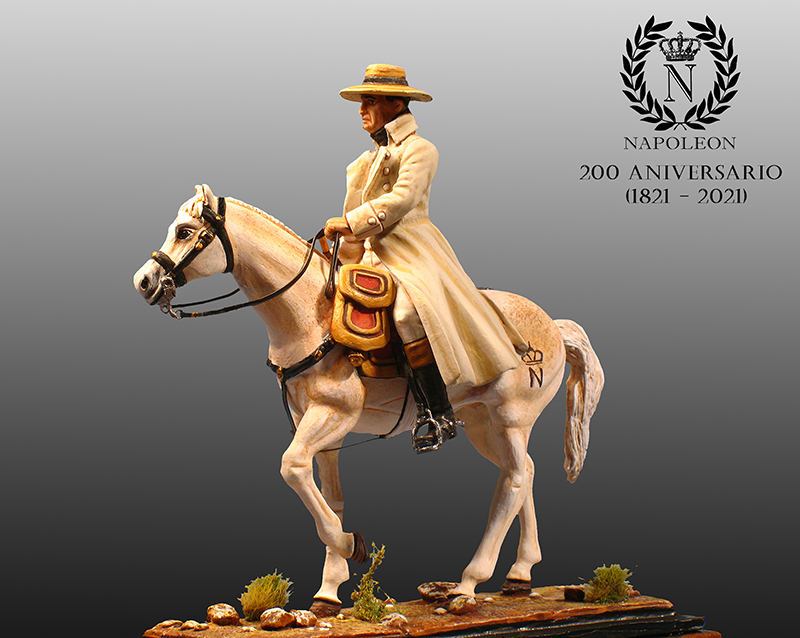
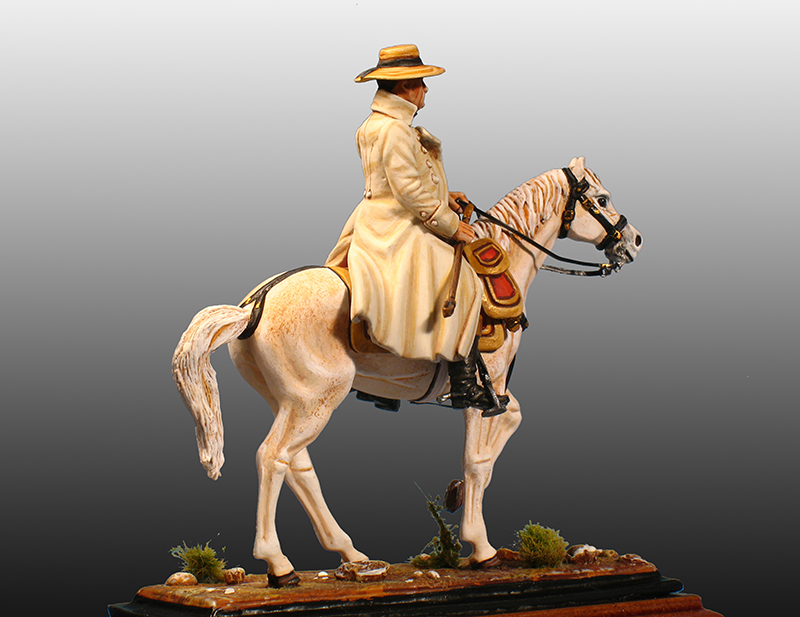


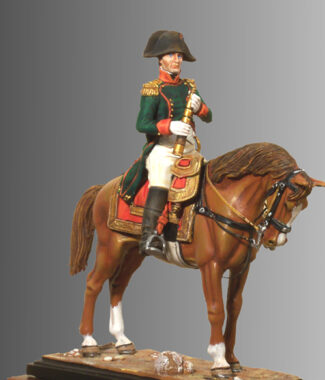
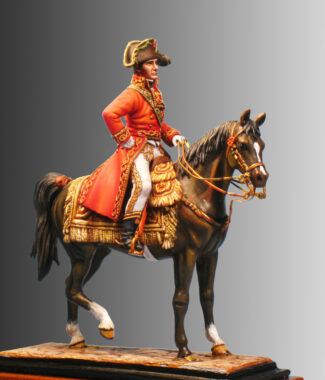
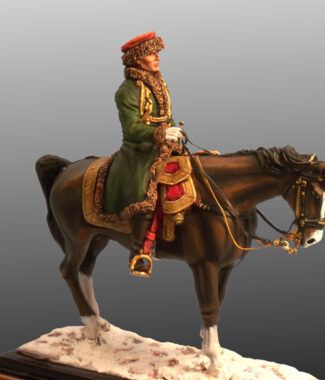
Reviews
There are no reviews yet.